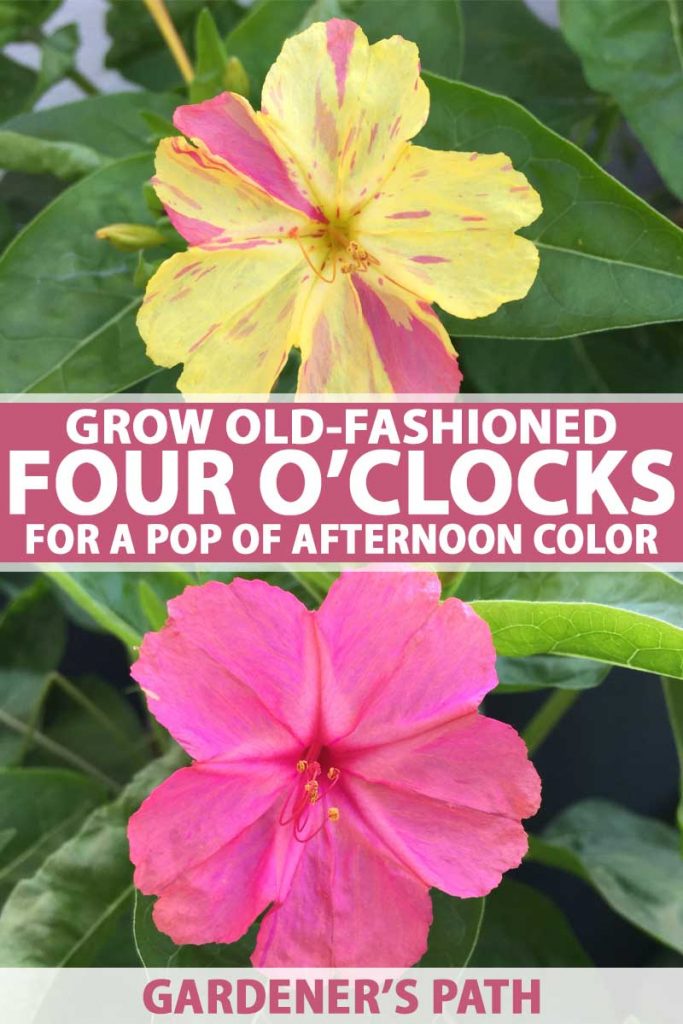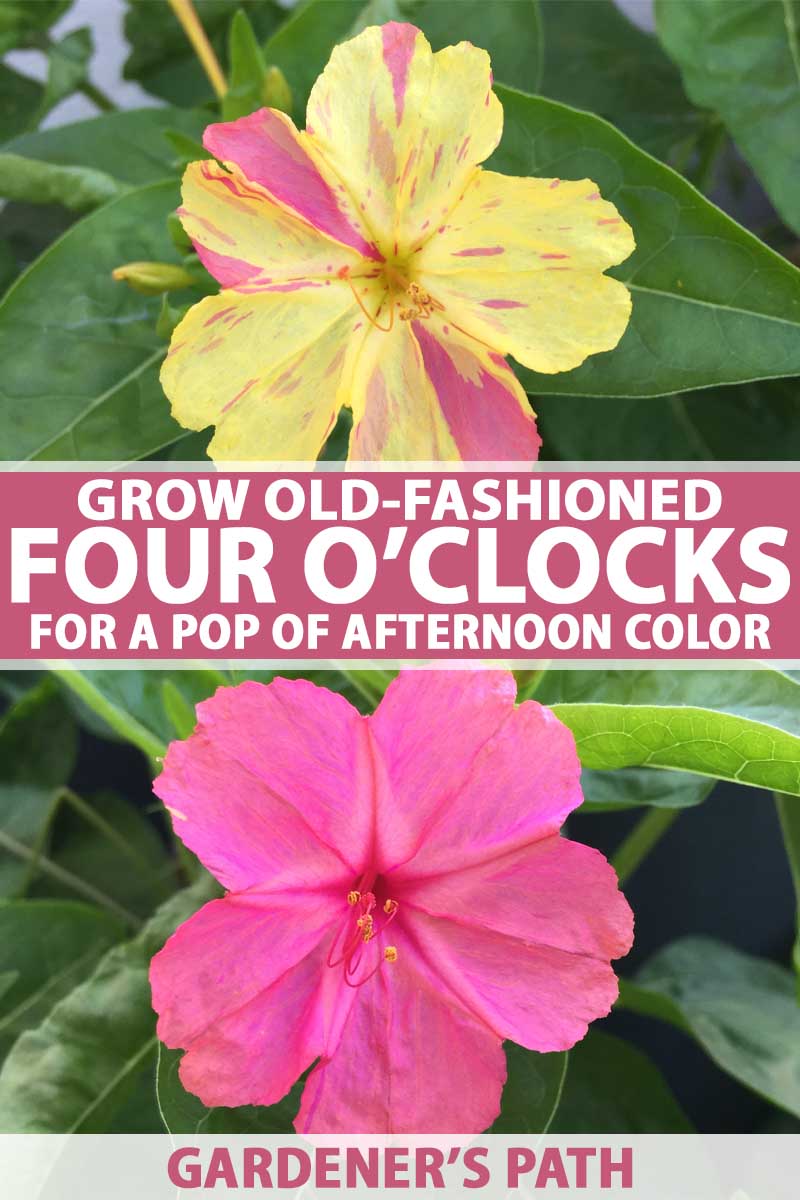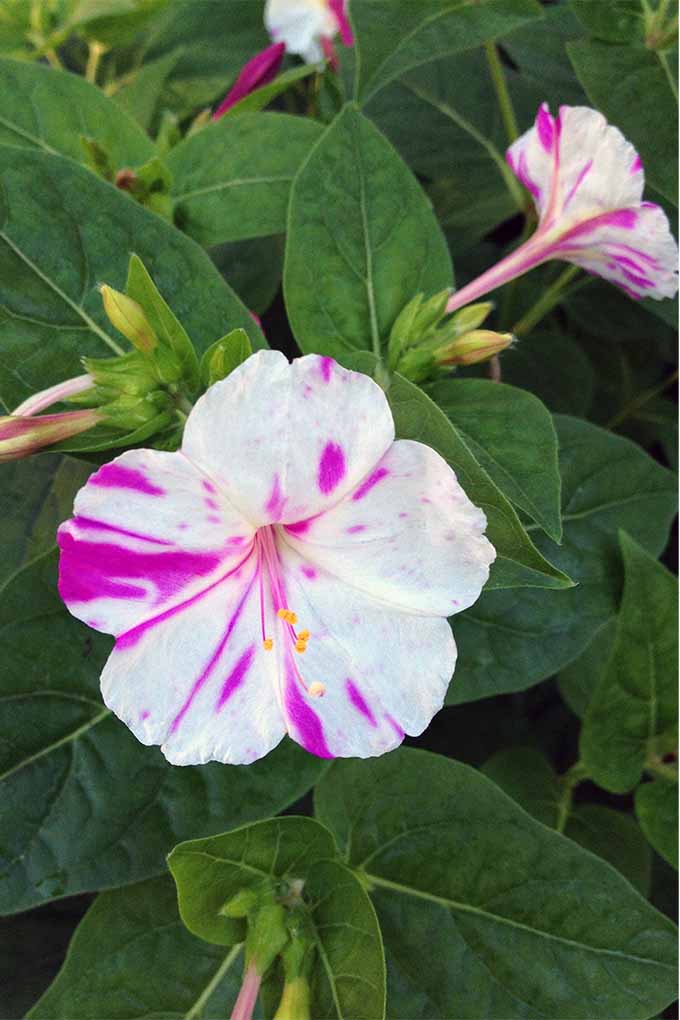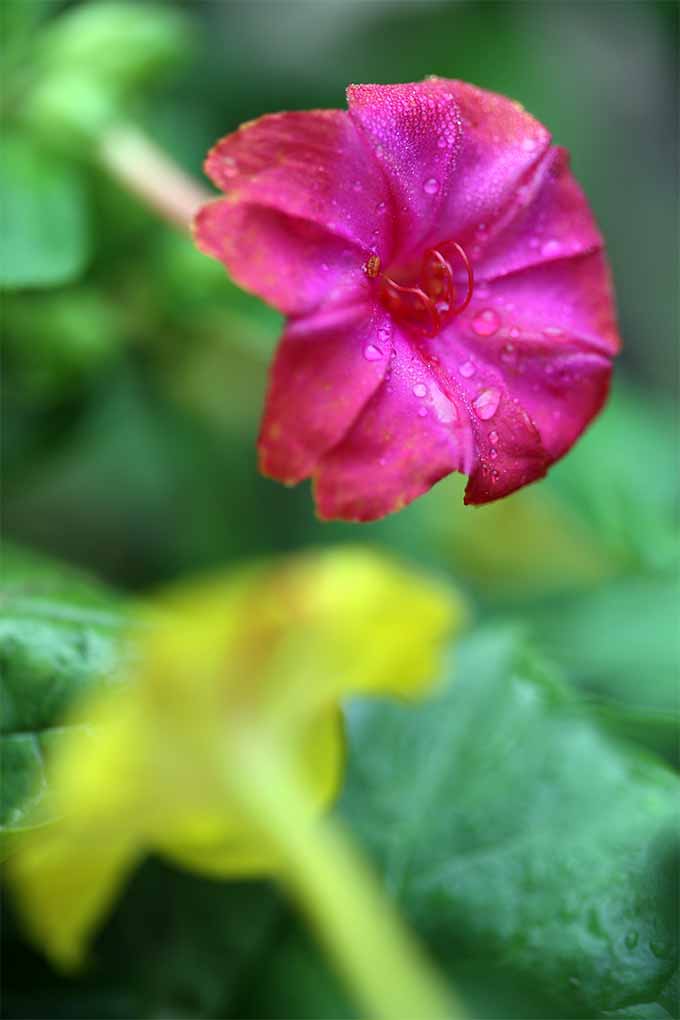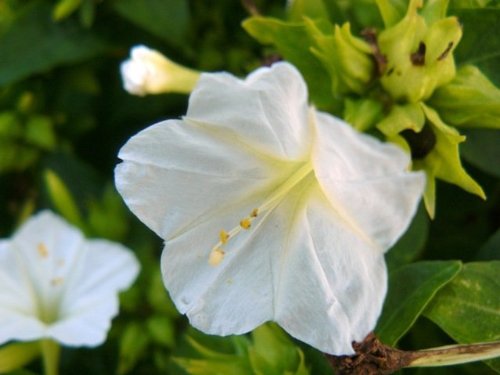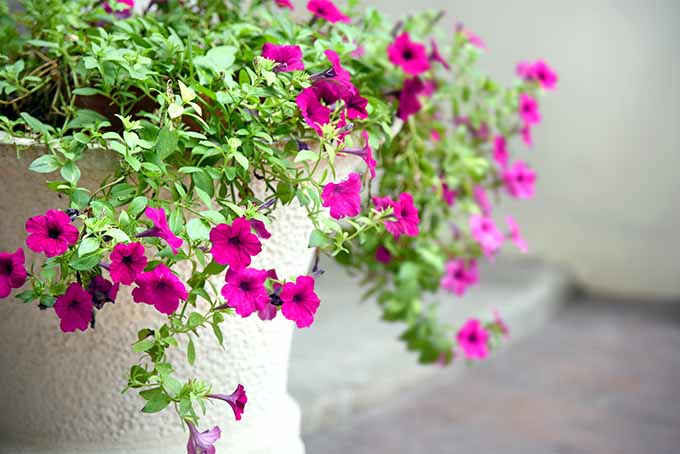And while you may recall the rather old-fashioned four o’clock (Mirabilis jalapa) from visits to Grandma’s house, the name of the plant isn’t a reflection of when Grandma eats dinner. Instead, the name indicates the time of day when the plant’s trumpet-shaped flowers open. The flowers open in late afternoon, in response to a temperature drop. Nocturnal moths and other nighttime pollinators are attracted to their nectar. We link to vendors to help you find relevant products. If you buy from one of our links, we may earn a commission. On cloudy days, the flowers open earlier and sometimes won’t close at all. Again, this is not due to a lack of light, but rather, to temperatures that are lower than usual.
Many gardeners find deadheading unnecessary because even the wilted blooms are attractive, and the plant blooms profusely with or without deadheading. Let’s learn more about this shrubby, colorful perennial!
Share and Share Alike
As if “four o’clock” weren’t an interesting enough name, this plant also goes by “marvel of Peru,” a nod to its native South American habitat. This flower has been cultivated for hundreds of years. In its heyday a couple of generations ago, it was a popular “passalong” plant in the southern United States, meaning neighbors and friends frequently shared the plant with each other.
Hardy and grown as a perennial in zones 7b-11, gardeners in other zones often grow these beauties as annuals. They will self-sow. This bushy nocturne can grow to be one to four feet tall, and one to three feet wide. It is heat and drought tolerant, and is a favorite of hummingbirds, bees, and butterflies. Wild critters know not to ingest the roots and seeds of this plant, because they are poisonous. If your pooch has a propensity for eating random yard objects, you may want to collect the dark, leathery, round seeds. In the deep south, M. jalapa begins blooming in late spring, while northern gardeners will have to wait until mid-summer to catch a whiff of the highly fragrant blooms.
Color, Color, and More Color
If color is your thing, you’ve come to the right place. Four o’clock flowers can be pink, red, magenta, lavender, yellow, or white.
The flowers may be a solid hue, or they may have more than one color in a striped, splotchy, or spotted pattern. You may see different combinations of shades and patterns on a single plant. And to further brighten your days, the flowers of some varieties will change color as the plant matures.
So, you buy a lovely yellow plant at the garden store in May, and walk out one July evening (around the time Grandma’s cooking dinner) to discover you now have a plant with dark pink flowers! That said, here are some varieties that, with luck, will remain true to color:
Time to Plant
M. jalapa flowers best if it’s planted in full sun, but it will take some shade. Four o’Clock ‘Pink Trumpet’ Seeds Four O’Clock Bi-Color Mix Seeds This plant prefers neutral to slightly acidic soil, and it is a heavy feeder, so make sure your soil is rich in organic material.
It prefers well-draining soil, and it does require regular moisture — the plants will go dormant if conditions are dry for too long. You can plant seeds or divide existing plants by digging up your neighbor’s tubers. Add a general-purpose fertilizer in early spring, and then feed once a month during the growing season if your soil needs a little boost.
Rust Be Gone
These plants are fairly pest free, but their foliage can be affected by rust.
Bonide Neem Oil For rust, remove affected foliage and treat the remainder of the plant with neem oil, such as this product from Bonide, available from Arbico Organics.
Time to Reminisce Over Dinner
Whether it’s eleven o’clock or one o’clock, or yes, even four o’clock, there’s never a bad time to plant these colorful beauties. Order seeds or ask a neighbor for a “passalong,” and help to revive a plant from an earlier time that surely deserves a comeback.
Invite Grandma over for dinner some summer day, and prepare to be regaled by tales of how she grew these memory-instilling flowers in her own garden. Product photos via My Seedy Needs, Country Creek Acres, David’s Garden Seeds, and Safer Brand. Uncredited photos: Shutterstock.
